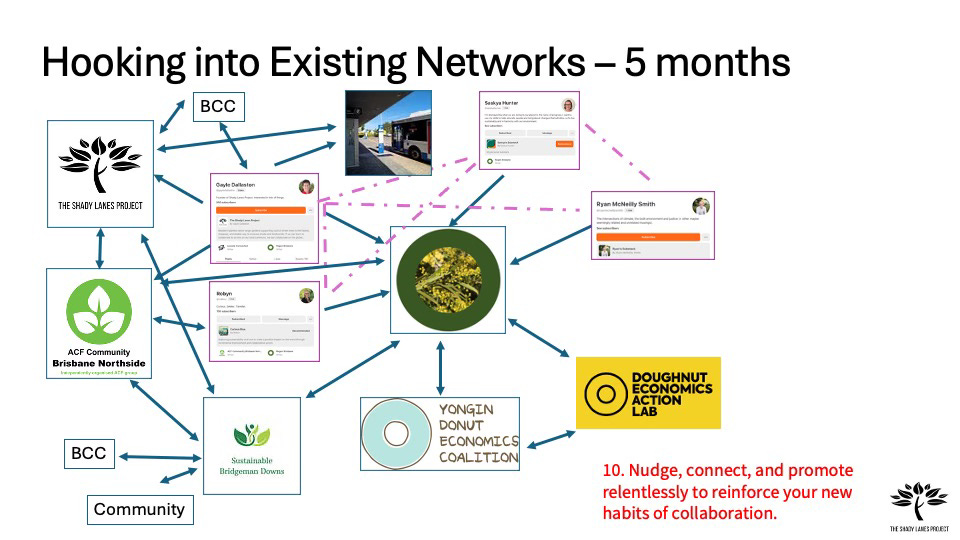Hooking into Existing Networks
Maps of innovative networks are difficult because they are always evolving with new parts added, and others changing or dropping off.
This is part of our session for the online day at Global Donut Days 2024. You can see the recording here. These pages will remain online so we can continue the discussion in the comments.
This could be a diagram of our technology network, or it could be a diagram of our people network. They should reflect and support each other.
Maps of innovative networks are difficult because they are always evolving with new parts added, and others changing or dropping off. They also look different depending on what you choose as your central focus. In the centre of this snapshot is Regen Brisbane.
It is surrounded by other people, other groups and networks, and through them, the Brisbane City Council, the Shady Lanes Project, and the community.
So when Brisbane City Council came to us to see if there was enough community interest to set up a volunteer group to care for land near platypus habitat at a local creek, we could pull the pieces together through these extended, interlinking networks very quickly.
Within a few weeks, we had group leaders, enough volunteers, a Substack and email newsletter to show them that it was viable.
Loose, interconnecting networks and boundary spanners to connect with all sectors, including government and business, mean you can be nimble enough to grasp unexpected opportunities.
Some of the entities on Substack in the network above:


